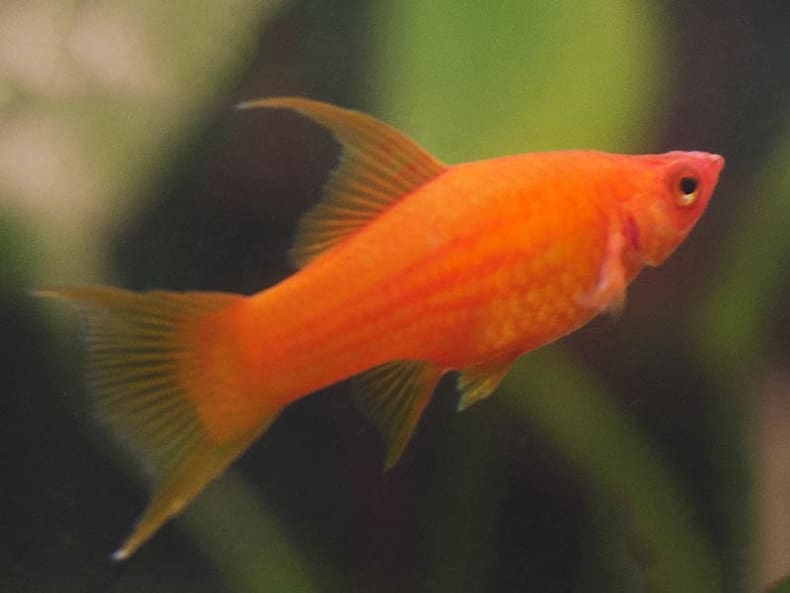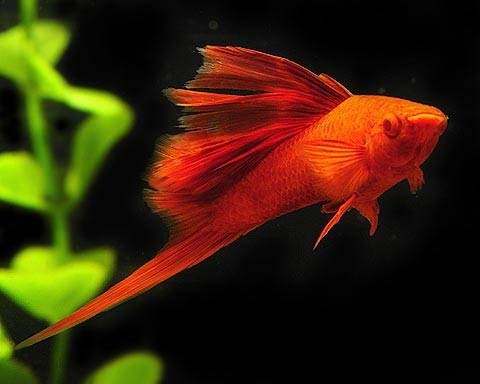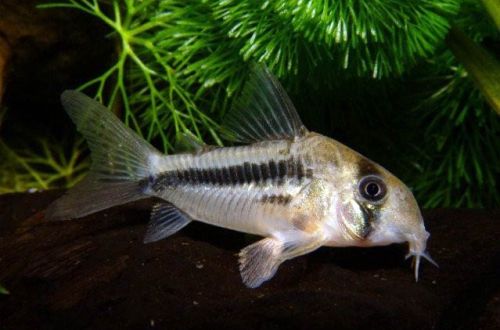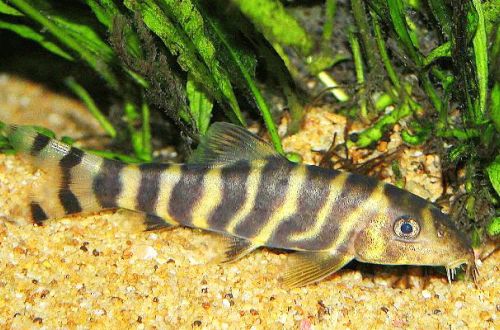
Veil swordsman
Swordsman veil – the name is collective for decorative breeds of swordsmen with long large fins. The most famous representatives of this group include the Flag Swordsman, Lyretail Swordsman and Forked Swordsman. The fish are artificially bred and are not found in the wild.

The history of these breeds began in the USA in the mid-1950s with an accidental and at the same time successful mutation of the Red Swordtail, which was noticed and subsequently began to be actively developed. As a result of selection and hybridization, the breeds mentioned above, as well as numerous varieties, have appeared.
Due to the ease of reproduction and closely related crossing, many new variations have appeared (and appear), so Veil Swordsmen should not be considered as stable forms. They change and will change in the future.
Brief information:
- The volume of the aquarium – from 100 liters.
- Temperature – 16-28°C
- Value pH — 7.0–8.0
- Water hardness – soft to high (10-30 dGH)
- Substrate type – any
- Lighting – moderate or bright
- Brackish water is permissible in a salt concentration of up to 15 g per 1 liter
- Water movement – light or moderate
- The size of the fish is 7–10 cm.
- Food – any food
- Temperament – peaceful
- Content alone, in pairs or in a group
Maintenance and care


Optimal conditions for a group of 3-4 fish can be provided in a spacious aquarium from 100 liters with warm slightly alkaline water of medium hardness. Other pH and dGH values are also acceptable, provided they are within the acceptable range.
Such unpretentiousness allows you to combine swordtails with other types of fish without the need to select aquarium neighbors based on their needs for the hydrochemical composition of water. In other words, they are compatible with any non-aggressive fish of a comparable size.
Aquarium maintenance consists of standard procedures: weekly replacement of part of the water with fresh water, removal of organic waste (food residues, excrement), cleaning glass and design elements from plaque, equipment maintenance.
Food. They will accept almost all types of feed in dry, frozen and live form. The daily diet may consist of flakes and granules combined with bloodworms, daphnia, brine shrimp and similar foods.
reproduction features. Easy to breed. The development of fry occurs inside the body of the female, and they are born already fully formed. It is worth remembering that Veil Swordsmen are able to interbreed not only with other breeds, but also with closely related species, giving hybrid offspring.





